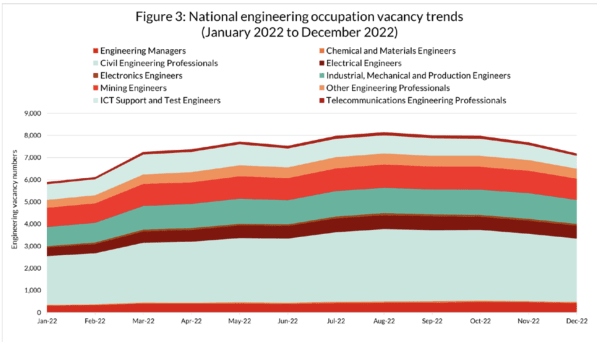The second in our clean energy jobs series looks at the huge demand for engineers and how this is a chance for the industry to attract more women.
If the Illawarra embraces clean energy, the jobs outlook is bright, says the University of Wollongong’s Energy Futures Network Director, Ty Christopher.
“We have the ability as a region to be more prosperous than we've ever been,” he said at an interview at the Innovation Campus in February.
Right now, UOW and Wollongong TAFE are gearing up to train the future clean energy workforce, with the university implementing a $10-million project to build a new Energy Futures Skills Centre at UOW, set for completion in 2025.
Nationally, the Labor government says its Powering Australia plan to invest in renewables will create 604,000 jobs.
So, what are these jobs and how do you (or your kids) get one?
Who’s needed
Right now, if your child shows any sign of talent at maths and science, encourage them, Ty reckons.
“If they've got any bent towards that … fan those flames.
“We need engineers, like there's no tomorrow.”
For graduate engineers, not only are jobs waiting, but salaries start at about $130,000. At the peak of their career, salaries could be triple that.
“On average, jobs in clean energy are very well remunerated, very well,” Ty said. “It’s still a supply and demand salary situation.”
The country needs twice as many engineers as it has, said Ty, pointing to a February 2023 report titled Australian Engineering Employment Vacancies by Engineers Australia.
On the engineering skills shortage, the report says, “Infrastructure Australia forecasts labour demand in 2023 to grow by 42,000 to a peak of 442,000, more than doubling the projected available supply.”
“The report is a measure of pent-up demand as it exists today,” Ty said. The killer fact here is that engineering vacancies and the need for engineers is ever growing.”
This skills shortage is a chance to encourage more women to become engineers.
“There's a huge diversity and inclusiveness discussion to be had. I’ve been in the engineering profession for almost 40 years now and when I started, people were tearing their hair out about ‘how do we get more women engineers?’ It's 40 years later. And guess what we're still saying…
“You look at the numbers and the demand here – how can we afford to ignore 50% of the intelligent people in our community?”
What will work involve
The Macquarie, Australia’s national dictionary, defines engineering as “the art or science of making practical application of the knowledge of pure sciences, such as physics, chemistry, biology etc”. Further reading will tell you this involves “skilful or artful contrivance; manoeuvring”.
None of which helps explain – for the average high school student considering a career in clean energy or the parent still struggling with the idea of YouTubing as a viable career – “What do engineers actually do?” or “Could I be an engineer?”
“Realistically for any flavour of engineering, you need people who are naturally curious; science interested, if not obsessed; and mathematically capable,” Ty said.
“But there are many different flavours of engineers.”

In its National Vacancy Trends graph, the Australian Engineering Employment Vacancies report lists nine engineering occupations, with demand for civil engineers topping the list.
“There's a real deficit – and an ongoing one, for a long period of time – in the civil engineering space that's going to hit particularly in the renewables area for us, because there's a lot of civil engineering needed.”
Civil engineers manage big projects and infrastructure. “I always say, ‘civil engineers paint big pictures with bulldozers’.”
In the clean energy transition, demand for all kinds of engineers is high – including materials engineers who work in steel making, and mechanical and production engineers who organise and run large factories like Port Kembla’s steelworks. But there is one obvious need in the solar sector, with the report noting the biggest increase in job vacancies in 2022 was for electrical engineers.
“The rollout of renewable energies and a soaring energy price is directly correlated to this strong increase,” it reads.
Why do it
Engineering degrees are hard work but careers can be “tremendously fulfilling”, Ty said.
“For me, supplying people with a safe and reliable and affordable supply of electricity is something that will always make people's lives better.”
Electrical engineers are often the people keeping the lights on, going out after big storms to do the dangerous job of restoring power to households and businesses.
“Think about the service dedication of people who leave their own family in the dark, literally, in a blackout, to go and restore the power,” Ty said. “It's the SES mindset.”
Read more in Work begins on $10m Energy Futures Skills Centre at UOW and Watch the rise of clean energy jobs in Australia


